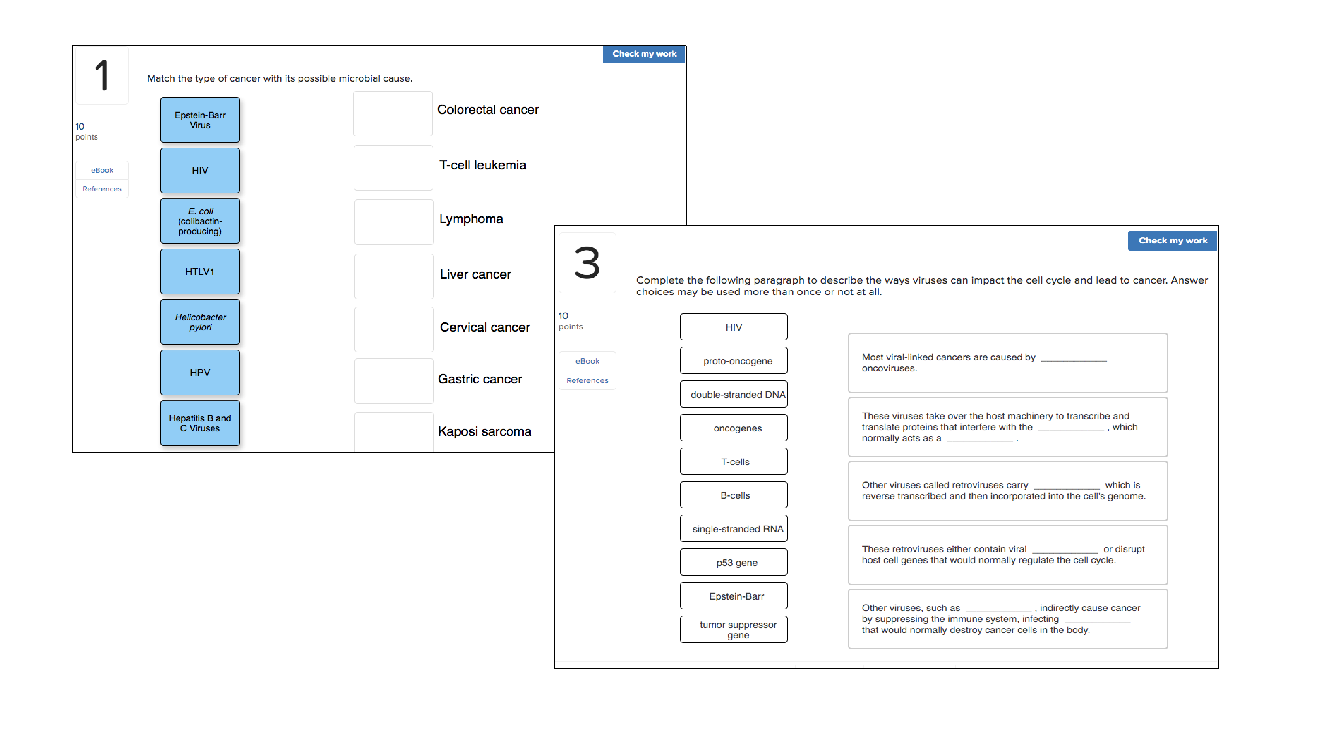Engage Your Microbiology Students with Real Life Applications using Relevancy Modules
Learn how to engage Your Microbiology Students with Real Life Applications using Relevancy Modules
Published September 30, 2020


As instructors, a refrain we hear consistently from our students is “why do I need to know this?” It is often difficult for non-majors to visualize the need to understand the intricacies of the cell cycle, for example. In my course, each unit has its own set of learning outcomes, but on the first day of class, I present 4 outcomes for the course in general. Number 3 states “to appreciate what it means to be a valuable organism/consumer on our planet”. Many of our students will leave our classrooms and live their lives without ever remembering the energy transformations in glycolysis, but they will make decisions about the food they eat, they will decide whether or not to vaccinate their children, they will turn on the news and hear information from the CDC regarding the health of our nation. I teach at a Community College and my students are often non-traditional with busy schedules juggling jobs, families, and schoolwork. I do whatever I can to alleviate the drudgery of learning the necessary details by piquing their interest with elements that feature in their daily activities.
If we want our students to engage with the course, it is in our best interest to make the material as relevant to their daily lives or career paths as possible. If they have a frame of reference, their interest level will increase, and they will be more motivated to spend time learning. Our memory is self-referential; we are much more likely to remember information that we can pull from our own experiences. While students may not feel the need to learn the phases of mitosis out of context, they may have spent time with a friend or loved one who was diagnosed with cancer and had difficult decisions to make regarding surgery and/or chemotherapy. They themselves likely received a vaccine to protect against human papilloma virus and may not understand why. Putting these complex concepts into practical scenarios they can relate to, justifies the need to delve a little deeper and learn the finer details.
Our non-major’s microbiology textbooks come equipped with a series of Relevancy Modules to facilitate student-centered learning. By generating interest, instructors can boost engagement, which in turn increases the likelihood that students will be successful in the course. How can you use them effectively in your course? The Relevancy Modules can be used as an accompaniment to a current unit to enhance understanding, or they may be used as extra credit to encourage self-study of a subject not covered in the body of the course. Maybe they can be used as a springboard to initiate a discussion group, or as an active learning classroom exercise? They may also serve as a ‘hook’ to introduce a lecture topic to spark curiosity. As we adjust to online teaching in the time of COVID-19, I assigned the “Scientific Thinking in Everyday Life” Relevancy Module in the first week along with questions posted in a forum to serve as a jumping-off point for a class discussion. I was surprised and delighted at the level of thought and detail students put into their responses and examples, I enjoyed seeing the students interact with each other, albeit virtually, and I felt more confident that having thought about it, they would assess their sources carefully as the semester progressed.
We have four Relevancy Modules already available. In addition to the Scientific Thinking module mentioned earlier, we also have Fermentation and the Making of Beer, Microbes and Cancer, and Antibiotic Resistance, each with a series of Connect questions to accompany them.

We are excited to introduce five more this year after polling instructors to assess their needs. Currently in production we have modules on vaccines, emerging and reemerging infectious diseases, biotechnology, global health, and SARS-CoV-2. We strive to make these modules, relatable, visually appealing, and easy to read. Regardless of how you use them, we are confident your students will relate to the subject matter and will appreciate a context for the often-abstract information presented to them.



